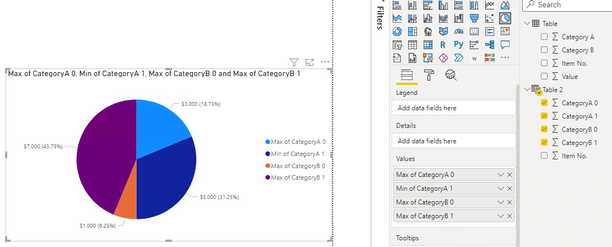FabCon is coming to Atlanta
Join us at FabCon Atlanta from March 16 - 20, 2026, for the ultimate Fabric, Power BI, AI and SQL community-led event. Save $200 with code FABCOMM.
Register now!- Power BI forums
- Get Help with Power BI
- Desktop
- Service
- Report Server
- Power Query
- Mobile Apps
- Developer
- DAX Commands and Tips
- Custom Visuals Development Discussion
- Health and Life Sciences
- Power BI Spanish forums
- Translated Spanish Desktop
- Training and Consulting
- Instructor Led Training
- Dashboard in a Day for Women, by Women
- Galleries
- Data Stories Gallery
- Themes Gallery
- Contests Gallery
- QuickViz Gallery
- Quick Measures Gallery
- Visual Calculations Gallery
- Notebook Gallery
- Translytical Task Flow Gallery
- TMDL Gallery
- R Script Showcase
- Webinars and Video Gallery
- Ideas
- Custom Visuals Ideas (read-only)
- Issues
- Issues
- Events
- Upcoming Events
The Power BI Data Visualization World Championships is back! Get ahead of the game and start preparing now! Learn more
- Power BI forums
- Forums
- Get Help with Power BI
- DAX Commands and Tips
- Create a pie chart for line items with multiple ta...
- Subscribe to RSS Feed
- Mark Topic as New
- Mark Topic as Read
- Float this Topic for Current User
- Bookmark
- Subscribe
- Printer Friendly Page
- Mark as New
- Bookmark
- Subscribe
- Mute
- Subscribe to RSS Feed
- Permalink
- Report Inappropriate Content
Create a pie chart for line items with multiple tags (binary in nature 1,0)
I have a dataset which looks like this.
| Item No. | Category A | Category B | Value |
| 1111 | 1 | 0 | $1000 |
| 2222 | 1 | 1 | $2000 |
| 333 | 0 | 1 | $3000 |
| 4444 | 1 | 1 | $2000 |
I want to create a pie chart which populates the values of both category A and B.
Solved! Go to Solution.
- Mark as New
- Bookmark
- Subscribe
- Mute
- Subscribe to RSS Feed
- Permalink
- Report Inappropriate Content
Hi @Anonymous ,
Here are the steps you can follow:
1. Create calculated table.
Table 2 =
SUMMARIZE('Table','Table'[Item No.],
"CategoryA 1",CALCULATE(SUM('Table'[Value]),FILTER(ALL('Table'),'Table'[Category A]=1)),
"CategoryA 0",CALCULATE(SUM('Table'[Value]),FILTER(ALL('Table'),'Table'[Category A]=0)),
"CategoryB 1",CALCULATE(SUM('Table'[Value]),FILTER(ALL('Table'),'Table'[Category B]=1)),
"CategoryB 0",CALCULATE(SUM('Table'[Value]),FILTER(ALL('Table'),'Table'[Category B]=0))
)2. Result:
All set to Max.
Please click here for the pbix file
Best Regards,
Liu Yang
If this post helps, then please consider Accept it as the solution to help the other members find it more quickly
- Mark as New
- Bookmark
- Subscribe
- Mute
- Subscribe to RSS Feed
- Permalink
- Report Inappropriate Content
Hi @Anonymous ,
Here are the steps you can follow:
1. Create calculated table.
Table 2 =
SUMMARIZE('Table','Table'[Item No.],
"CategoryA 1",CALCULATE(SUM('Table'[Value]),FILTER(ALL('Table'),'Table'[Category A]=1)),
"CategoryA 0",CALCULATE(SUM('Table'[Value]),FILTER(ALL('Table'),'Table'[Category A]=0)),
"CategoryB 1",CALCULATE(SUM('Table'[Value]),FILTER(ALL('Table'),'Table'[Category B]=1)),
"CategoryB 0",CALCULATE(SUM('Table'[Value]),FILTER(ALL('Table'),'Table'[Category B]=0))
)2. Result:
All set to Max.
Please click here for the pbix file
Best Regards,
Liu Yang
If this post helps, then please consider Accept it as the solution to help the other members find it more quickly
- Mark as New
- Bookmark
- Subscribe
- Mute
- Subscribe to RSS Feed
- Permalink
- Report Inappropriate Content
Hi @Anonymous ,
Like Amit mentioned you should look into unpivoting the data into a format where you have a category column describing if a row belong to A or B category then use the binary data as the value.
Did I answer your question? Mark my post as a solution!
Proud to be a Super User!
- Mark as New
- Bookmark
- Subscribe
- Mute
- Subscribe to RSS Feed
- Permalink
- Report Inappropriate Content
@Anonymous , What will the legend.
If you have two measures category A and Category B, then you can have pie on that without legend.
You can unpivot Category A and Category B use the new column as Legend, the 1/0 column as details and value as value
Helpful resources

Power BI Monthly Update - November 2025
Check out the November 2025 Power BI update to learn about new features.

Fabric Data Days
Advance your Data & AI career with 50 days of live learning, contests, hands-on challenges, study groups & certifications and more!

| User | Count |
|---|---|
| 21 | |
| 10 | |
| 9 | |
| 4 | |
| 4 |
| User | Count |
|---|---|
| 34 | |
| 31 | |
| 19 | |
| 13 | |
| 10 |


